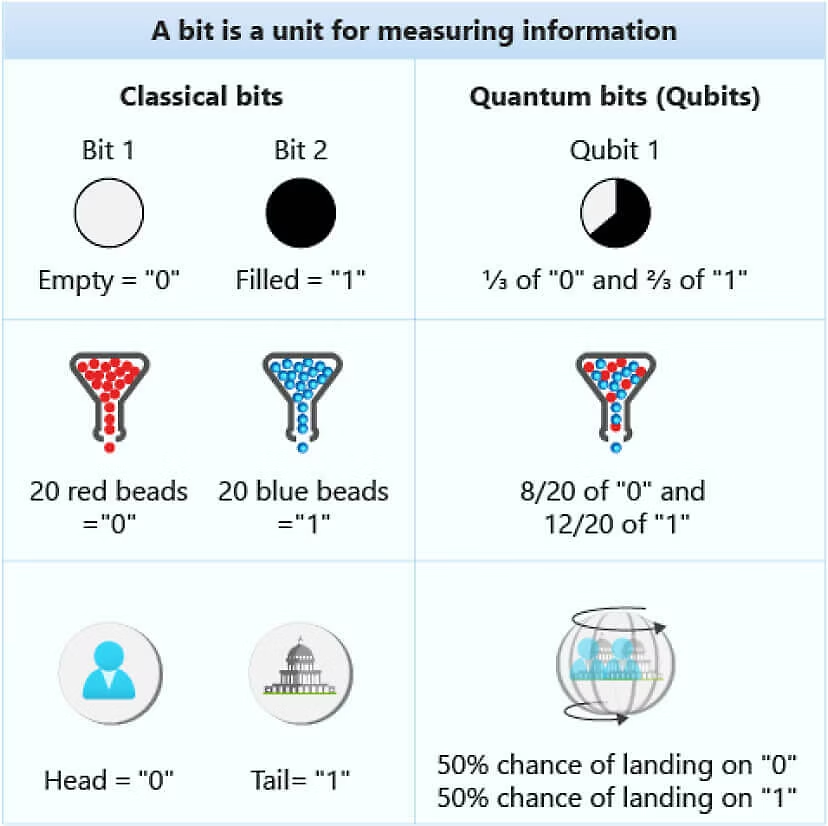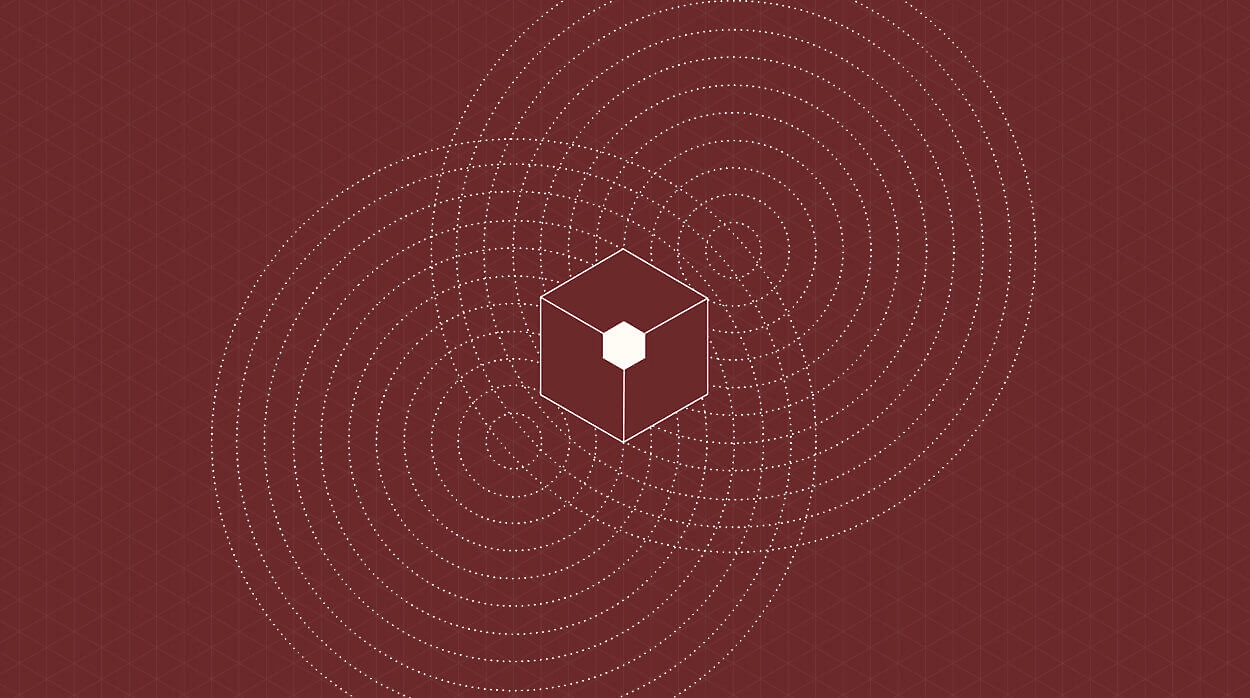What is a qubit?
Just like a binary bit is the basic unit of information in classical (or traditional) computing, a qubit (or quantum bit) is the basic unit of information in quantum computing. Quantum computing is driving new discoveries in healthcare, energy, environmental systems, smart materials, and beyond.
Qubit vs bit
Qubits are represented by a superposition of multiple possible states
A qubit uses the quantum mechanical phenomena of superposition to achieve a linear combination of two states. A classical binary bit can only represent a single binary value, such as 0 or 1, meaning that it can only be in one of two possible states. A qubit, however, can represent a 0, a 1, or any proportion of 0 and 1 in superposition of both states, with a certain probability of being a 0 and a certain probability of being a 1.
Superposition gives quantum computers superior computing power
Superposition allows quantum algorithms to process information in a fraction of the time it would take even the fastest classical systems to solve certain problems.
- The amount of information a qubit system can represent grows exponentially. Information that 500 qubits can easily represent would not be possible with even more than 2^500 classical bits.
- It would take a classical computer millions of years to find the prime factors of a 2,048-bit number. Qubits could perform the calculation in just minutes.
There are many physical implementations of qubits
Where classical computers use familiar silicon-based chips, qubits (sometimes called “quantum computer qubits”) can be made from trapped ions, photons, artificial or real atoms, or quasiparticles. Depending on the architecture and qubit systems, some implementations need their qubits to be kept at temperatures close to absolute zero.

Superposition, interference, and entanglement
Superposition enables quantum algorithms to utilize other quantum mechanical phenomena, such as interference and entanglement. Together, superposition, interference, and entanglement create computing power that can solve problems exponentially faster than classical computers.

Interference
A consequence of superposition is interference. Qubit states can interfere with each other because each state is described by a probability amplitude, just like the amplitudes of waves.
Constructive interference enhances amplitude, while destructive interference cancels out amplitude. These effects are used in quantum computing algorithms, which make them fundamentally different from classical algorithms. Interference is used together with entanglement to enable the quantum acceleration promised by quantum computation.
Entanglement
Multiple qubits can exhibit quantum entanglement. Entangled qubits always correlate with each other to form a single system. Even when they’re infinitely far apart, measuring the state of one of the qubits allows us to know the state of the other, without needing to measure it directly.
Entanglement is required for any quantum computation and it cannot be efficiently performed on a classical computer. Applications include factoring large numbers (Shor’s algorithm) and solving search problems (Grover’s algorithm).
The future of qubits
Qubits are fragile
One of the most significant hurdles in quantum computing is the fragile nature of qubits. Entanglement of the qubit system with its environment, including the measurement setup, could easily perturb the system and cause decoherence. Therefore, advancements in quantum computing hardware construction and error-correction methods are currently being developed.
Topological qubits are more stable
To address the challenge of fragility, Microsoft uses topological qubits, which are stabilized by manipulating their structure and surrounding them with chemical compounds that protect them from outside contamination. Topological qubits are protected from noise due to the quasiparticle topological properties, making the Microsoft quantum hardware more robust against errors. This increased stability will help the quantum computer scale to complete longer, more complex computations to bring more complex solutions within reach. source






 Tech History
Tech History
 Fun Facts
Fun Facts Bio-Hacking 101
Bio-Hacking 101

 Cops Gone Wild
Cops Gone Wild 
